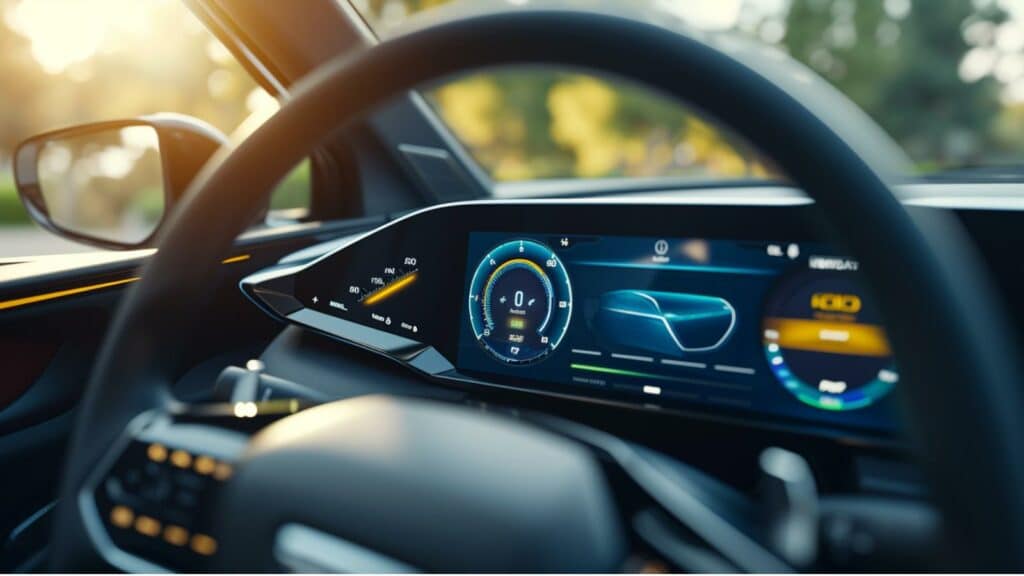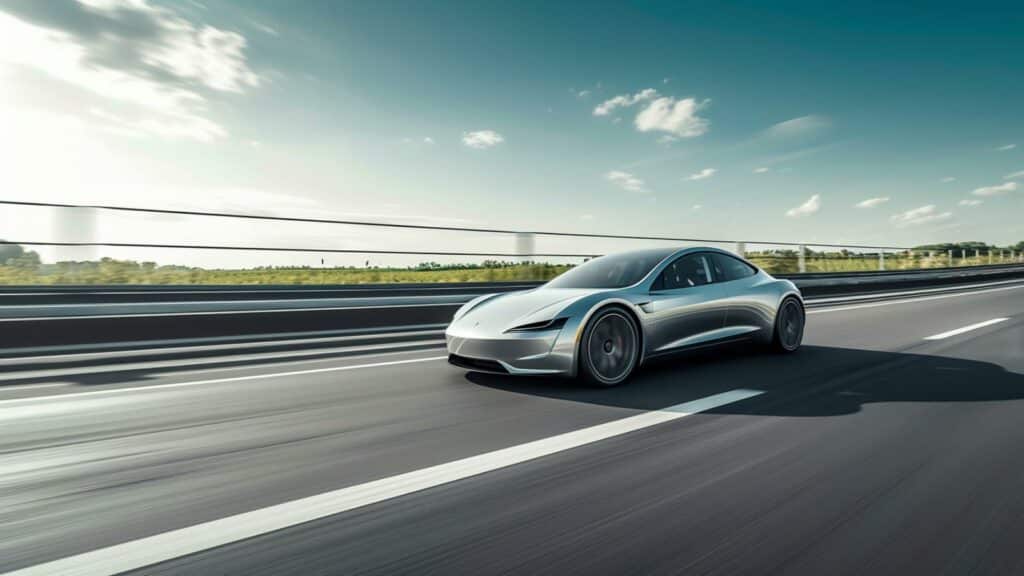Electric and hybrid vehicles are changing the transportation landscape, offering eco-friendly options for discerning vehicle owners. If you’re in the market for a new car, mainly looking for an electric vehicle, you’re likely curious to know the factors influencing the total driving range. As you embark on this journey, let’s break down the complexities of EV range without drowning in technicalities. After all, the goal is clarity, not confusion.
It’s no secret that electric vehicles are altering the electric motor industry, yet the driving range concept can still stir up uncertainty among potential buyers. While a conventional vehicle can travel around 400 miles on a single tank, electric vehicles still strive to hit that benchmark. But let’s remember not to forget that most of our daily trips are shorter than epic road trips, yet the desire for flexibility and a sense of security remains paramount. This article will unlock the secrets that prevent our vehicles from fully reaching these theoretical heights.
Understanding What Is The Range of an Electric Car
Electric car owners must understand and maximize driving range to meet transportation needs. By adopting efficient driving practices, considering factors that influence range, and making informed choices about battery capacity and technology, you can confidently select a vehicle that aligns with your daily driving habits and environmental goals.
Why Driving Range Matters
Think of a trip you’re planning. Driving range refers to the distance your vehicle can cover on one charge or tank of fuel. It helps determine if you can reach your destination without stopping for more power. This is particularly crucial for electric cars, which rely on a battery for energy. Therefore, understanding and maximizing driving range is essential for car owners.

What is EV Range
The EV driving range indicates how far a vehicle can travel before requiring additional energy. In the case of gas-powered vehicles, driving range is usually measured in miles per gallon of fuel. This measurement tells us the distance these cars can cover using a specific amount of fuel.
For an electric car, which operates on the energy stored in its EV battery, the driving range is measured in miles or kWh. This helps us determine the distance an electric car can travel using one unit of energy. A higher value implies the car has a larger battery or more energy efficient and can cover greater distances.
Why Measuring Units Matter
The method of measuring driving range carries great significance. For conventional vehicles, more miles per gallon indicates better fuel efficiency, enabling the vehicle to travel farther. In electric cars, a higher kilowatt-hour implies superior energy utilization, allowing the vehicle to cover more distance with less battery power.
Understanding these measuring units helps us assess whether a vehicle excels at conserving energy and traveling longer distances, regardless of whether it runs on gas or electricity.
What Are The Factors That Influence the Total Driving Range?
There are various factors affecting the driving range of your EV. This section delves deeper into the key elements that impact an EV’s range, including vehicle-specific factors, driving habits, environmental conditions, and charging considerations.
1. Vehicle-Specific Factors
Battery Capacity and Chemistry: The battery’s capacity is pivotal in determining an electric car’s driving range. A larger battery capacity generally leads to a more extended range. Battery chemistry, influenced by technological advancements, impacts energy efficiency and overall range.
Vehicle Weight and Aerodynamics: Heavier vehicles need greater energy consumption, reducing driving range. The aerodynamic design of a car also matters, as streamlined shapes lead to lower air resistance and improved range.
Efficiency and Motor Technology: Innovations in motor technology and vehicle efficiency contribute to extending the driving range. Enhanced energy management and regenerative braking systems help conserve energy during deceleration.
2. Driving Conditions
Speed and Driving Style: Driving at high speeds or aggressive driving styles can significantly reduce driving range due to increased energy consumption. Gentle acceleration and deceleration are key to maximizing capacity.
Terrain and Elevation: Driving on hilly terrains or through steep elevations can impact the remaining range. Uphill climbs require more energy for electric cars or higher fuel consumption for conventional vehicles, while downhill descents can offer regenerative energy recovery.
3. Environmental Factors
Temperature Extremes: Extreme temperatures, whether hot or cold, affect EV battery performance. Cold temperatures reduce battery capacity and efficiency, while using climate control in hot weather consumes additional energy.
Climate Control Usage: Using heating or air conditioning can impact the vehicle’s driving range, as they draw energy from the battery to maintain cabin comfort.
4. Charging Habits
Charging to Full Capacity: Charging habits influence battery health and driving range. While charging to total capacity can affect range, balancing this with battery longevity is essential.
Rapid Charging: A charging station that offers quick energy boosts can lead to battery degradation over time. Balancing fast, rapid charging with slower, regular charging is important for preserving battery health.
Tips for Maximizing Driving Range
Now, if you’re an EV driver, here are some cool tips to make the most of your driving range:
1. Efficient Driving Practices
Experienced EV owners and driving enthusiasts emphasize the importance of adopting efficient driving practices to extend the driving range of an electric vehicle. “Easy on the Pedal” is a mantra shared by many. By driving gently and avoiding sudden acceleration and braking, energy consumption is minimized, resulting in more efficient use of the available battery charge.
Research conducted by the U.S. Department of Energy demonstrates that aggressive driving can lower an EV’s range by up to 40%, compared to calm, smooth driving. This includes practices such as hard accelerations and abrupt braking. Conversely, adopting efficient driving practices such as gradual acceleration, maintaining steady speeds, and utilizing regenerative braking can enhance an EV’s range.
2. Route Planning and Road Conditions
Planning your route is another strategy to enhance your driving range. Mapping your journey ahead helps you avoid unnecessary detours and congested routes, saving energy and time. In addition, considering road conditions is essential. Hilly terrains and routes with frequent elevation changes can impact energy consumption.
According to a study published by the National Renewable Energy Laboratory (NREL), strategic route planning can reduce energy use by as much as 7% to 15%. This encompasses avoiding areas of high congestion, which can lead to frequent stopping and starting, and selecting routes with fewer hills or steep inclines that require more energy to navigate. Careful attention to road conditions, elevation changes, and avoiding heavy traffic areas can significantly impact preserving an EV’s driving range.

3. Climate Control Management
Using the vehicle’s climate control system judiciously is another tip to maximize the driving range. Heating and air conditioning systems consume energy, which can significantly impact range. To manage this, it’s recommended to pre-condition the interior while the vehicle is still charging. This way, you’re using power from the charging source rather than the battery.
The American Automobile Association conducted a study in 2019 and found that at a temperature of 95 degrees Fahrenheit, the range of EV batteries can decrease by 4% without air conditioning and 17% with AC running. The study also revealed that high temperatures can cause a significant reduction in the range of EV batteries, up to 31%.
4. Tire Maintenance
One often overlooked aspect that can influence driving range is tire maintenance. Keeping your tires properly inflated is crucial for optimizing efficiency. Under-inflated tires create higher rolling resistance, leading to increased energy consumption. Regularly checking and maintaining tire pressure can noticeably impact the driving range.
These simple tips can make your electric car go even farther on a single charge. Remember, knowing your driving range and how to maximize it is like having a secret tool to enjoy your ride and save battery power.
Final Thoughts: What is the Range of an Electric Car?
In the quest for extending the driving range of electric and hybrid vehicles, adopting efficient driving practices, understanding battery capacity and technology, planning routes, managing climate control, and maintaining tires play a significant factor. By considering these and integrating insights from experts and experienced EV drivers, potential buyers can confidently make decisions that align with their transportation needs and environmental goals. As the EV landscape continues to evolve, harnessing these strategies will contribute to a greener and more efficient future of transportation.
FAQs: Clearing Misconceptions About What Is EV Range
Are electric vehicles (EVs) capable of achieving the same driving range as traditional gas-powered vehicles?
While gas-powered vehicles can cover around 400 miles on a single tank, electric cars are still working towards achieving similar benchmarks. However, it’s important to note that most of our daily trips are shorter than long road trips. EVs are designed to meet the needs of daily commuting and general use, with an increasing number of models offering competitive driving ranges for everyday usage.
Is it true that EVs have a limited range due to their reliance on batteries?
EVs have made significant strides in battery technology, resulting in improved driving ranges. Factors like battery capacity, chemistry, and energy efficiency play key roles. Modern electric cars can offer competitive ranges that meet everyday driving demands. It’s important to assess your daily driving habits and charging station availability to choose an EV that suits your needs.
Will charging my EV to total capacity constantly improve its driving range?
Charging to total capacity can maximize an EV’s driving range, but striking a balance is essential. Frequent charging to 100% can affect battery health and longevity. Some EVs have recommended charge limits for everyday use. It’s advisable to consult your vehicle’s manual and charging guidelines.




